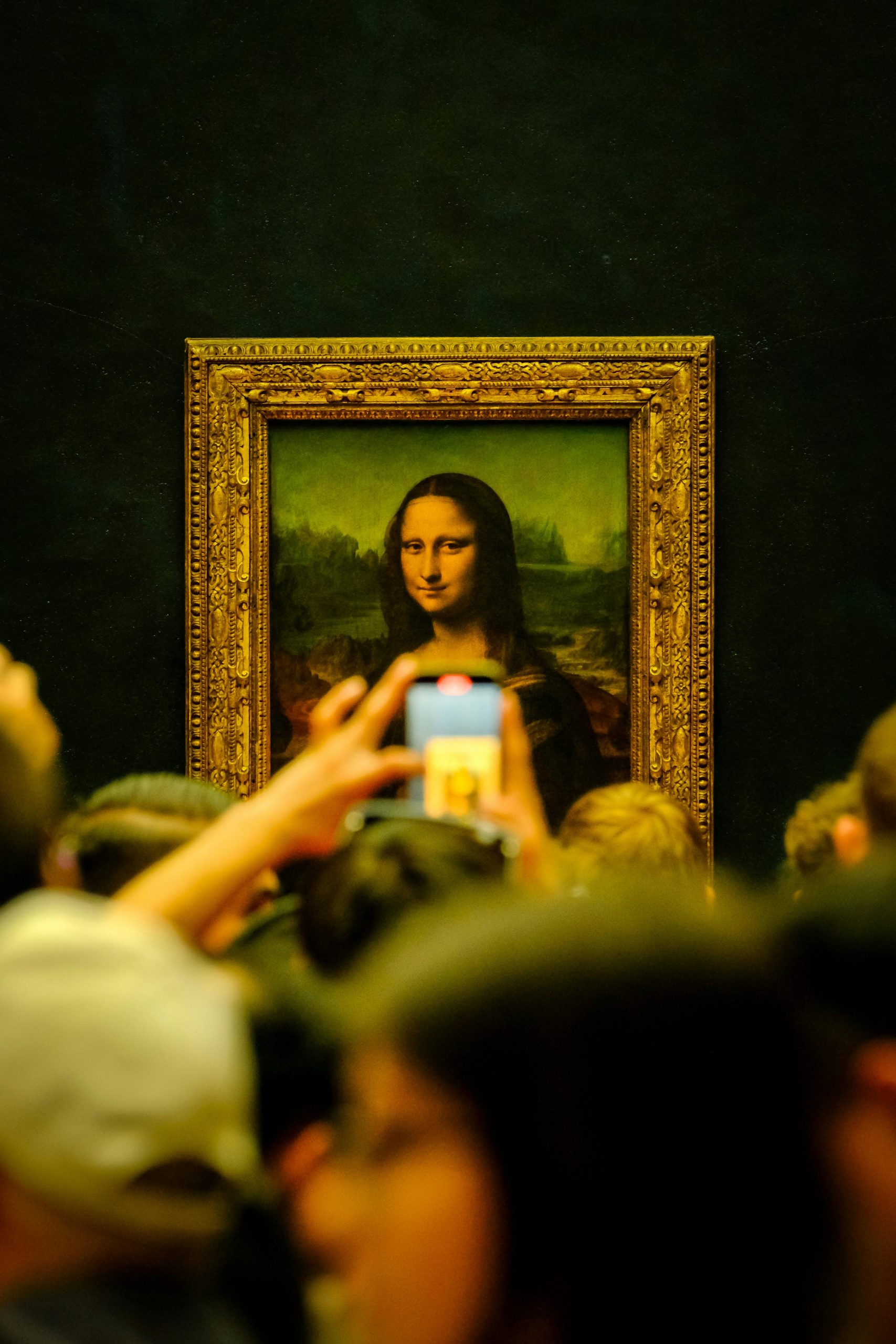Table of Contents
![]()
The Mona Lisa, painted by Leonardo da Vinci, stands as one of the most renowned works of art in history. This portrait, celebrated for its enigmatic expression and sophisticated technique, has captured the fascination of audiences for centuries. This article delves into its creation, historical journey, and enduring impact.
The Artist: Leonardo da Vinci
Leonardo da Vinci (1452-1519) was a polymath whose interests spanned various fields, including art, science, and engineering. Born in Vinci, Italy, he was trained in Florence under the guidance of Andrea del Verrocchio. Da Vinci’s diverse talents are evident in his extensive body of work, which includes masterpieces such as The Last Supper and Vitruvian Man. His approach to art, characterized by meticulous observation and innovative techniques, profoundly influenced Renaissance painting.
Leonardo’s artistic style, marked by his use of sfumato—a technique that blends colors and tones seamlessly—can be seen in the Mona Lisa. This method contributed to the painting’s lifelike quality and its compelling, almost otherworldly, aura.
Creation of the Mona Lisa
The Mona Lisa was commissioned by Francesco del Giocondo, a wealthy Florentine merchant, to celebrate the birth of his second child and the purchase of a new home. The portrait is believed to have been created between 1503 and 1506, although Leonardo continued to work on it intermittently for several years.
Leonardo’s use of sfumato in the Mona Lisa is particularly notable. The technique involves the delicate gradation of tones and colors to create a soft transition between light and shadow, enhancing the painting’s realism. The composition of the portrait, with its pyramidal structure and the sitter’s gaze directed slightly to the side, adds to its depth and intrigue.
The Mona Lisa’s Journey Through History
Initially, the Mona Lisa was housed in various locations in Italy before being acquired by King Francis I of France in the early 16th century. It was displayed in several royal residences, including Fontainebleau and the Palace of Versailles, reflecting its status as a prized piece of art.
The painting gained international attention after it was stolen from the Louvre Museum in 1911 by Vincenzo Peruggia, an Italian handyman who believed the painting should be returned to Italy. The theft and subsequent recovery of the Mona Lisa heightened its fame and solidified its reputation as a cultural icon.
Cultural Impact and Legacy
The Mona Lisa’s impact extends beyond art history into popular culture. It has become a symbol of artistic genius and intrigue, often referenced and parodied in various media. Its smile, the subject of numerous interpretations and debates, adds to its allure and mystery.
In museums, the Mona Lisa continues to draw millions of visitors annually. Its current home at the Louvre Museum in Paris, where it has been exhibited since its return from Italy, showcases its significance in the realm of art and its role in museum curation.
The Mona Lisa’s Significance
The Mona Lisa’s significance lies not only in its artistic technique but also in its role in the history of portrait painting. It represents Leonardo da Vinci’s innovative approach to capturing human emotion and expression. The painting has inspired countless artists and remains a touchstone for discussions about art and beauty.
The painting’s enduring mysteries, including the identity of the sitter and the meaning behind her enigmatic smile, continue to spark scholarly debate and public fascination. These elements contribute to the Mona Lisa’s lasting legacy as an unparalleled masterpiece.
Conclusion
The Mona Lisa’s journey from a commissioned portrait to a global icon underscores its profound impact on art and culture. From Leonardo da Vinci’s masterful creation to its place in modern museums, the painting embodies the ultimate blend of artistic skill and cultural significance. Its enigmatic presence and historical narrative ensure that the Mona Lisa remains a timeless symbol of artistic achievement and intrigue.
Share This





Be the first to comment